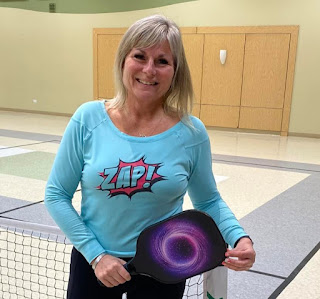Best way To Paint Your Snowboard | with steps
Best way To Paint Your Snowboard
Is it possible to improve the look of your snowboard by using the right paint? Remember that snowboards are individual boards, and not all paints are appropriate for their restoration. It is better to consider certain factors before taking a wrong step.
Because snowboards are stiff and lack pores, the first step is to sand the board to remove the old paint. We will apply the stain and sealer to the board after selecting the appropriate stain and sealer. You should do some research on paint application to avoid unappealing results.
Snowboards that are frequently used will show signs of wear and tear. Furthermore, snowboard paint can deteriorate as a result of salt, dirt, or other elements found in snow. Furthermore, cracks and scratches allow unwanted elements to enter the equipment. For these reasons, repainting your snowboard is a low-cost way to give it a new look and extend its lifespan.
Can You Paint Your Snowboard?
You can, of course, paint your snowboard. If you are a competitive athlete, your snowboard is most likely in poor condition after several seasons.
Painting or repainting your snowboard is a popular practice among snowboarders. If a novice is going to apply the paint, it is best to seek the advice of someone with more experience. To avoid wasting time and money, a good finish requires some technique.
When painting your board, you can be as creative as you want.
Considerations Before Painting Your Snowboard
Before you can start painting your snowboard, there are a few things you should do first. Examine some of these features.
• Examine the Snowboard's Shape
Before you do anything, examine the shape of your snowboard. A convex or concave board is always more difficult to paint than a flat board. It is best to leave the painting of these curved snowboards to a professional in the field.
We must ensure that the surface of our snowboard is smooth if it is flat. If you decide to risk painting a non-flat snowboard, you should be aware that the paint will most likely be uneven. An uneven painting can produce an unsightly and short-lived finish.
• Getting the Snowboard Ready
Remove the bindings from the board first. Clean the entire surface of the board with alcohol to remove any dirt. When the board is clean and dry, begin sanding it with fine-grit sandpaper to remove the old paint.
The important thing is that the surface be a little rough after sanding. This rough surface will aid in the new paint's rapid and thorough adhesion.
•About The Paint
Paint is what gives your snowboard the appearance of new equipment. Professionals in this field recommend using acrylic spray paint, which allows you to evenly cover the entire sanded surface.
If you don't want to paint certain areas, such as the edges, you can cover them with special tape. To give the snowboard a glossy and long-lasting finish, apply two or three coats of paint. It is critical to allow the previous coat of paint to completely dry before applying the next coat.
• About The Finish
After applying the paint coats, seal the snowboard with a water-resistant polyurethane varnish. It should not be overapplied because it will accumulate and stain. Although this would not be a performance issue, it would be an aesthetically pleasing issue.
What Materials Will I Need To Paint My Snowboard?
- Solvent to remove decals
- Wool rags
- Razor blades
- Sandpaper with grits ranging from 180 to 220
- Acetone
- Acrylic spray paint
- Cardboard
- Clear acrylic coating
- Adhesive or electrician’s tape
How To Paint A Snowboard? Step By Step
- Step 1: Using the solvent and a razor blade, we must remove all of the decals from the snowboard. The surface must then be cleaned with a wool cloth.
- Step 2: Then we'll sand the surface of the snowboard with a piece of sandpaper. We should continue rubbing until the board's surface feels rough when we run our hand over it.
- Step 3: Wet the wool rag with acetone and use it to wipe down the entire snowboard. After that, we must wait several minutes for it to dry.
- Step 4: requires us to flip the snowboard upside down. We must cover all of the board's edges with masking tape. This tape will keep paint from getting on the board where we don't want it.
- Step #5 Apply the spray paint at a 15-centimeter distance from the snowboard. Spray the entire surface of the board with the paint. Move the spray from side to side steadily to ensure that the color is applied evenly. Apply 2 to 3 coats of paint, allowing each coat to dry between coats.
- Step 6: You can cover parts of the snowboard with adhesive tape before applying the paint. This action will enable you to create one-of-a-kind designs; you can use cardboard to cover large areas.
- Step 7: Allow the snowboard to air dry for 24 hours. The masking tape should then be removed. Do it slowly and carefully because rushing it will damage the paint and design.
- Step #8 Hold the acrylic coating spray 15 to 20 centimeters away from the snowboard. Use even strokes to cover the entire surface of the board. After applying the acrylic coating, you must wait 24 to 48 hours before using the snowboard.






